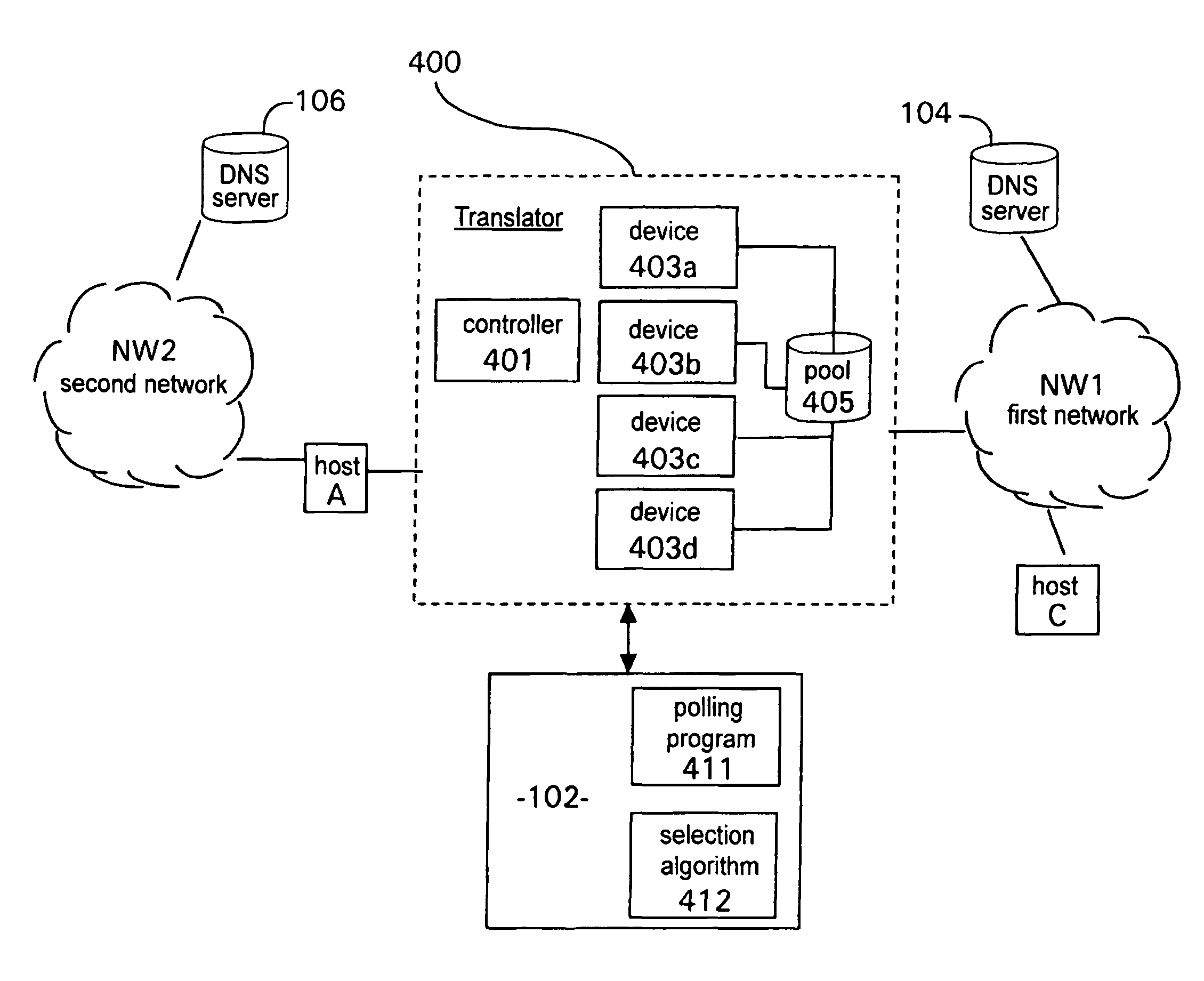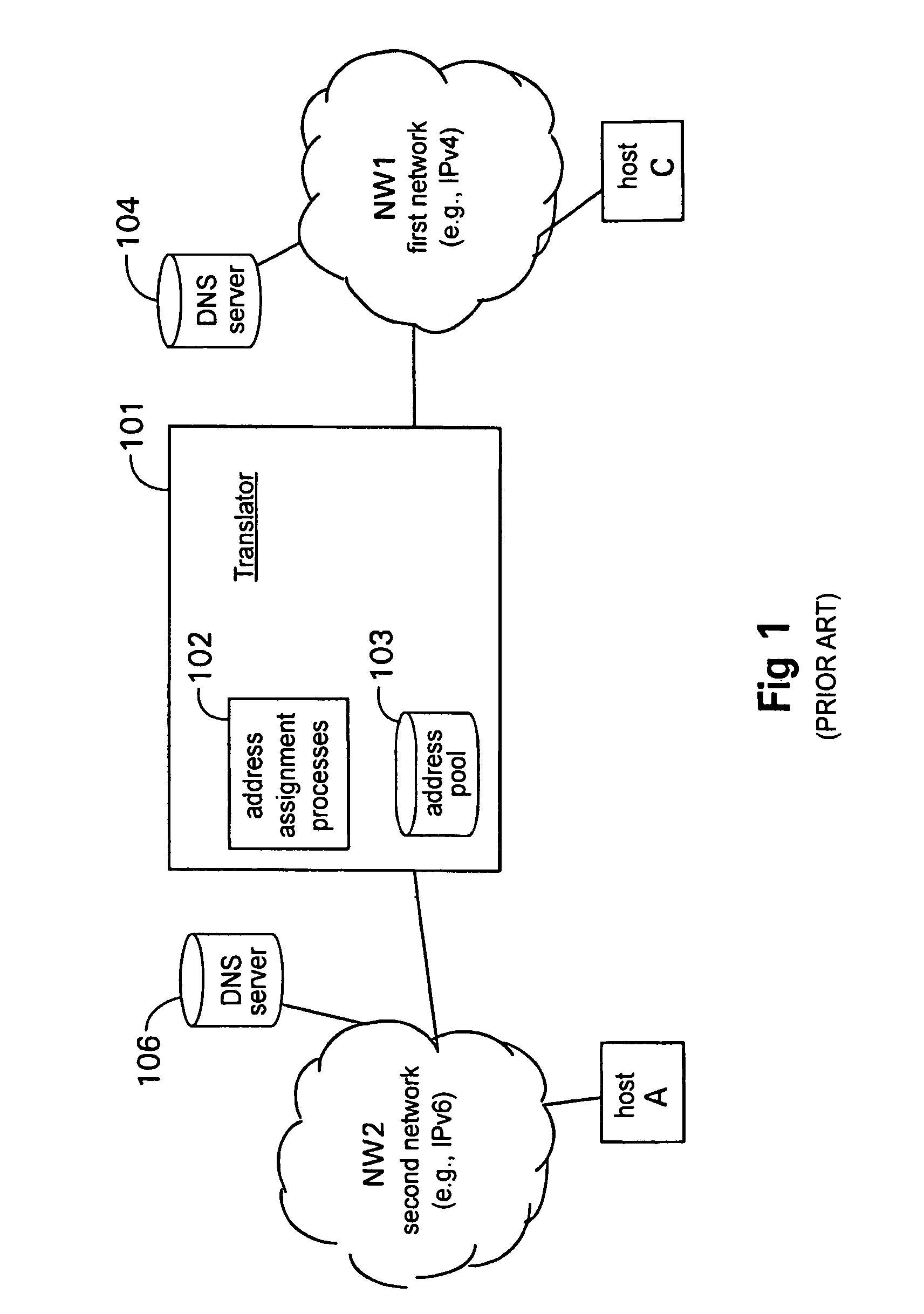Inter-network address translator that is separately addressable from address alias assignment process
a translator and address technology, applied in the field of address translators, can solve the problems of incompatibility with ipv4, little work on designing migration methods that are commercially scalable and robust, and the volume of ip traffic is continually increasing
- Summary
- Abstract
- Description
- Claims
- Application Information
AI Technical Summary
Problems solved by technology
Method used
Image
Examples
second embodiment
[0084]The second embodiment includes all of the features described in respect of the first embodiment, but instead of the address mappings being stored on the controller 401, the mappings are stored on a remote database, or similar, that is accessible to both the controller 401 and the devices 403i. Thus in this embodiment the devices 403i do not have to communicate with the controller 401 at all once the initial address assignment has been established.
third embodiment
[0085]The third embodiment includes all of the features described in respect of the first embodiment, but the devices 403a cache addresses in memory for a predetermined period. This embodiment would be particularly suitable for the scenario shown in FIGS. 6-11, where a host in an IPv4 network initiates communication, and where an intense period of communication is in progress between hosts A and C. If the device 403a caches mapping information locally, the device 403a does not have to continually request address mapping information from the controller. This therefore keeps communication between A and C wholly independent of the controller 401, minimizes network traffic and allows communications dependent on address translation to progress faster than in the other embodiments.
fourth embodiment
[0086]The fourth embodiment includes all of the features described in respect of the first embodiment, but the mappings are stored in the address pool 405, rather than in the controller 401. As for the second and third embodiments, the devices 403i do not have to communicate with the controller 401 at all once the initial address assignment has been established.
PUM
 Login to View More
Login to View More Abstract
Description
Claims
Application Information
 Login to View More
Login to View More - R&D
- Intellectual Property
- Life Sciences
- Materials
- Tech Scout
- Unparalleled Data Quality
- Higher Quality Content
- 60% Fewer Hallucinations
Browse by: Latest US Patents, China's latest patents, Technical Efficacy Thesaurus, Application Domain, Technology Topic, Popular Technical Reports.
© 2025 PatSnap. All rights reserved.Legal|Privacy policy|Modern Slavery Act Transparency Statement|Sitemap|About US| Contact US: help@patsnap.com



